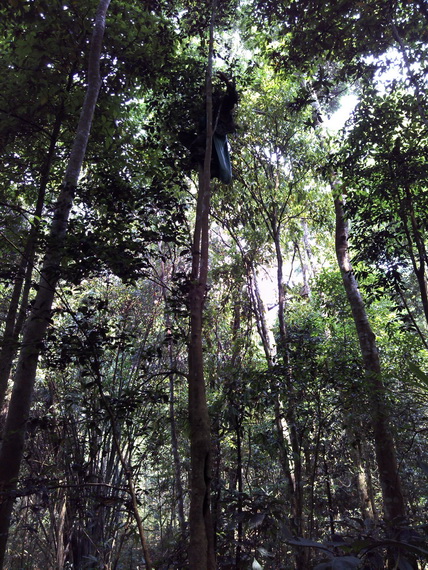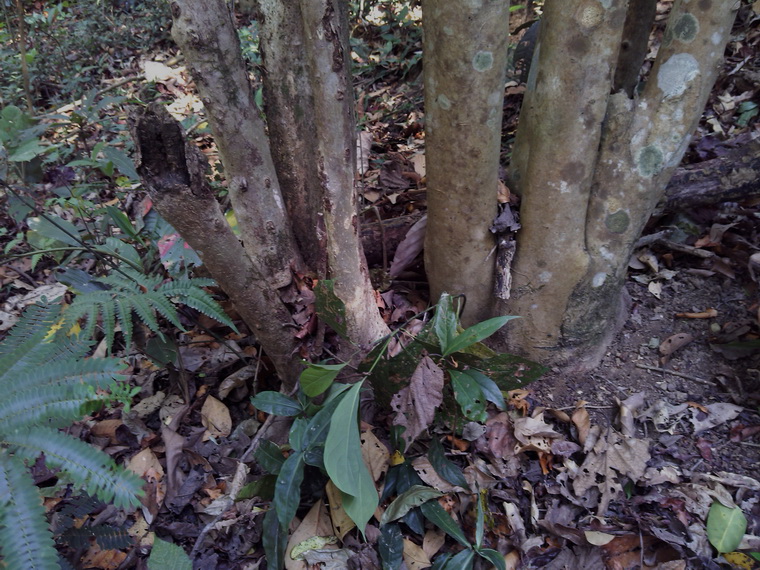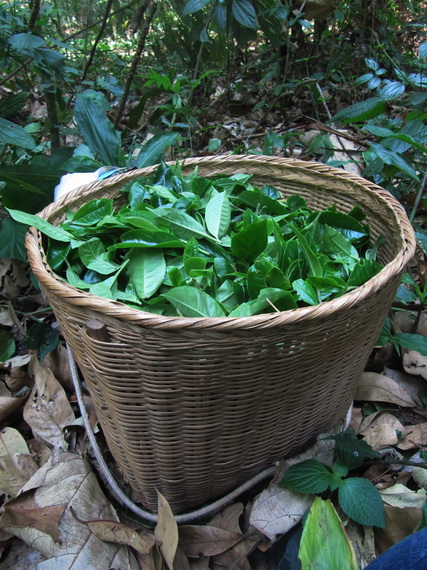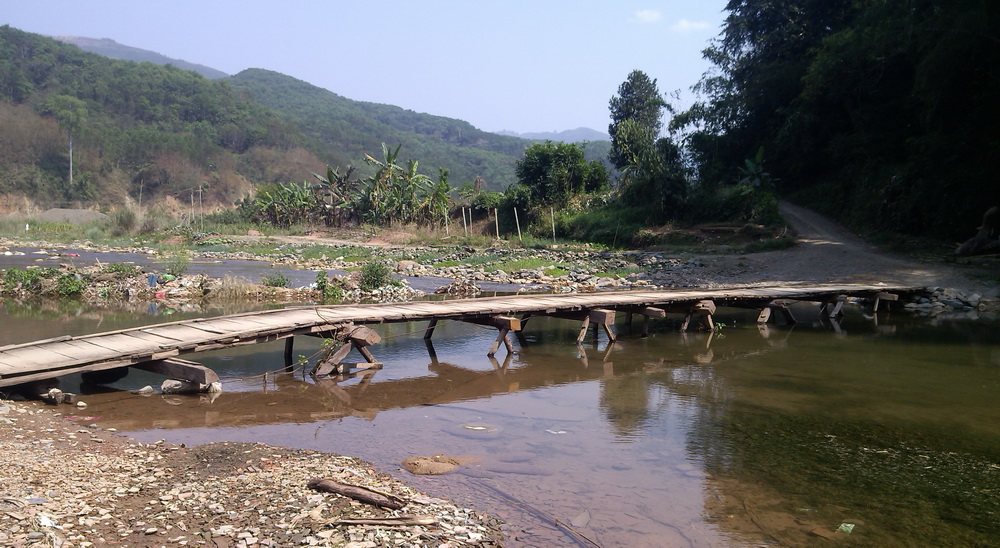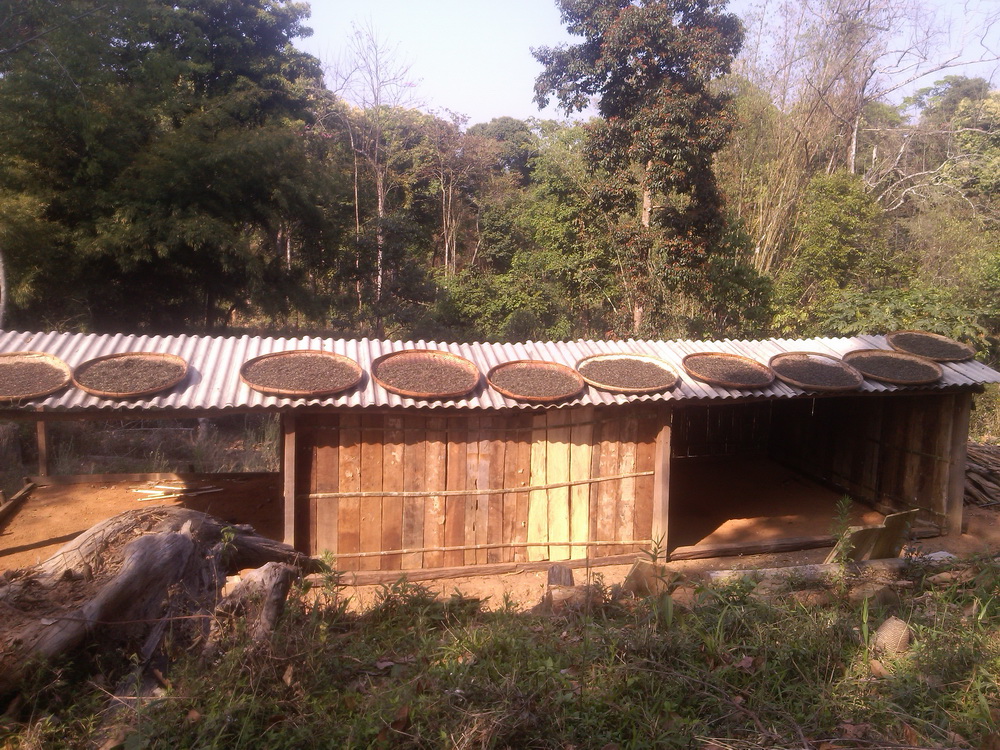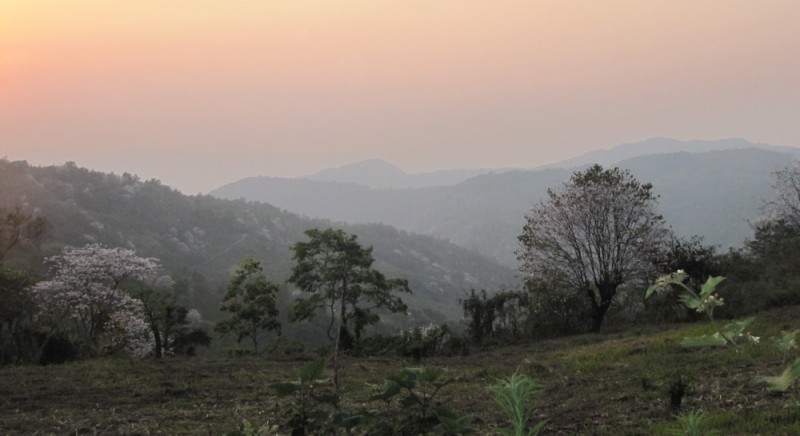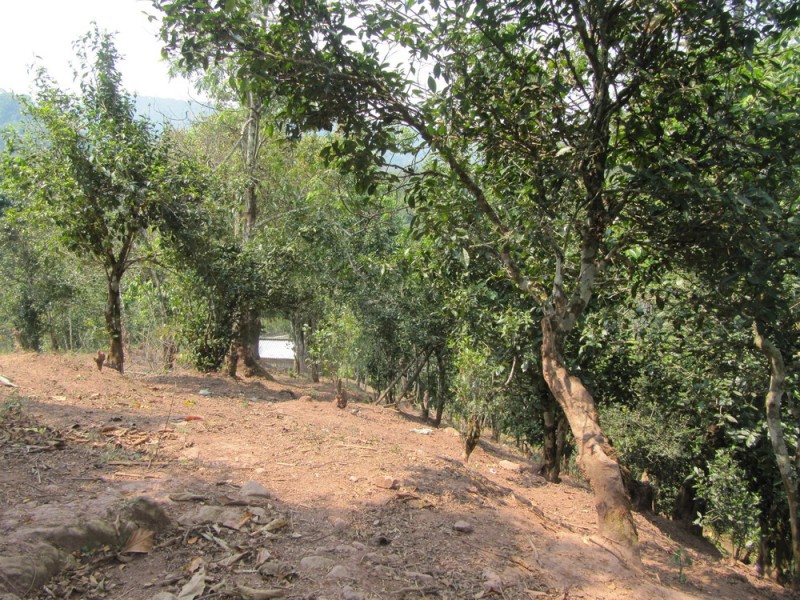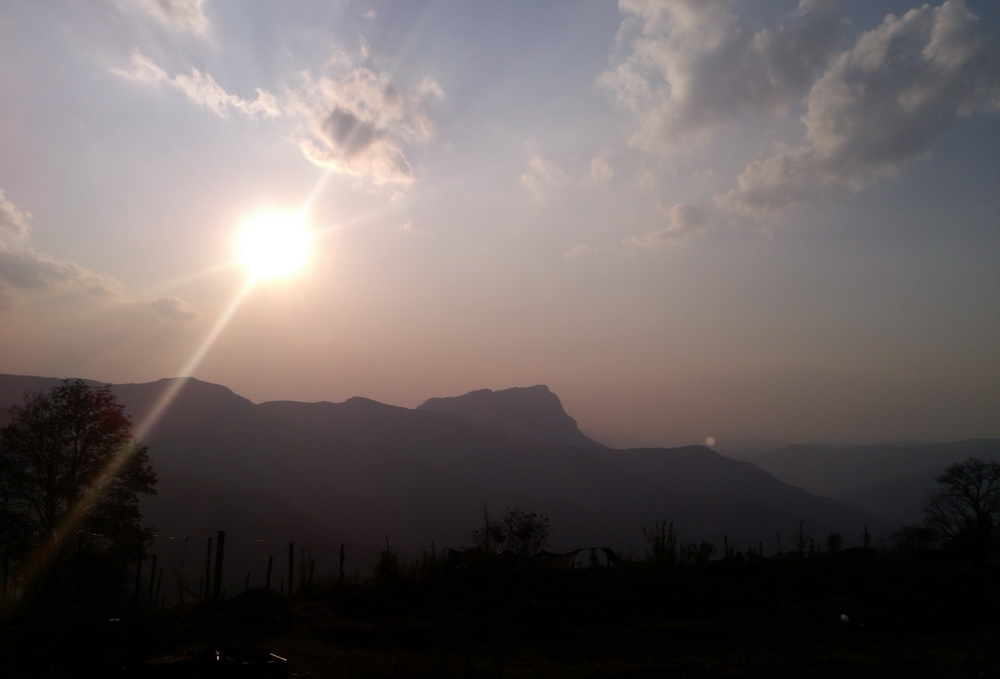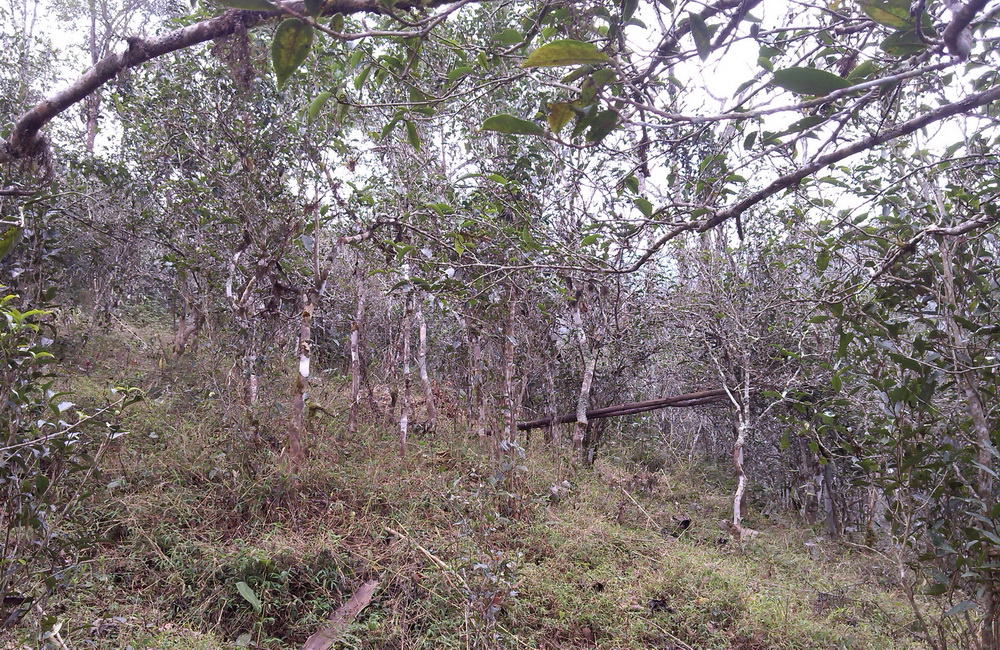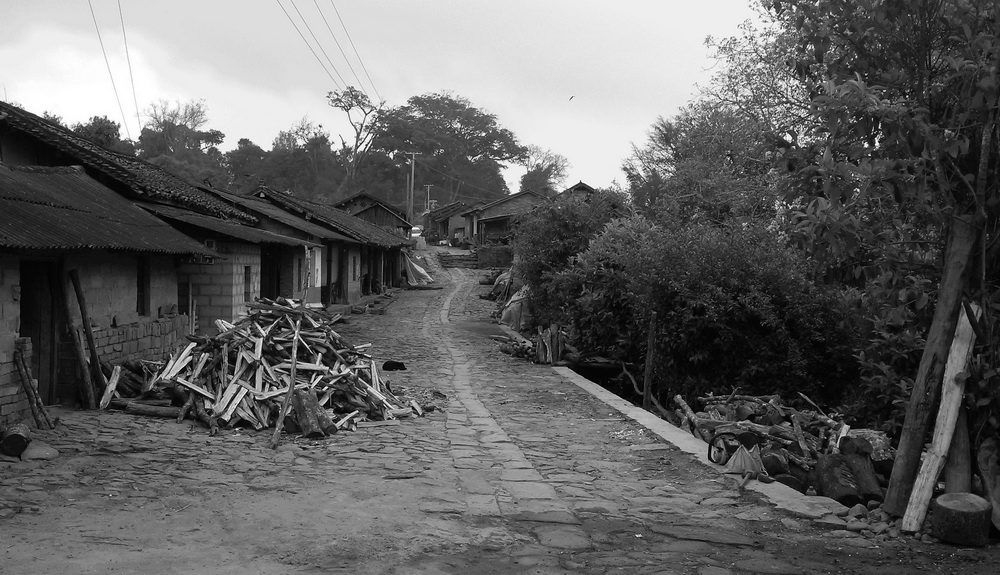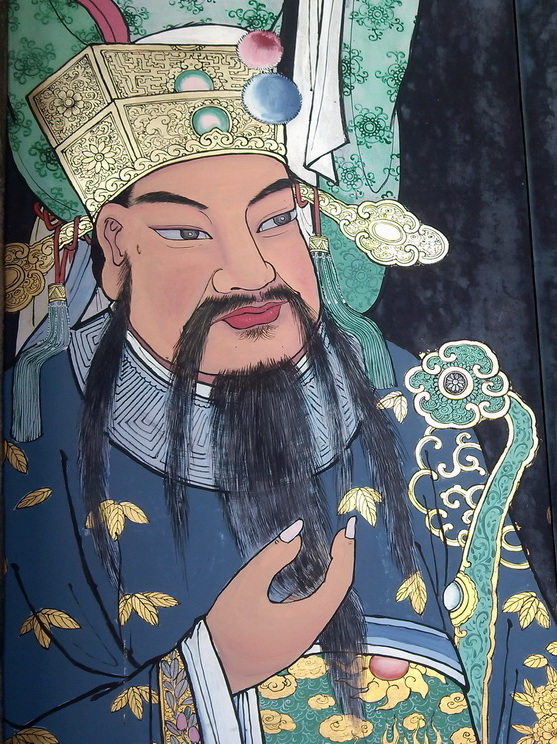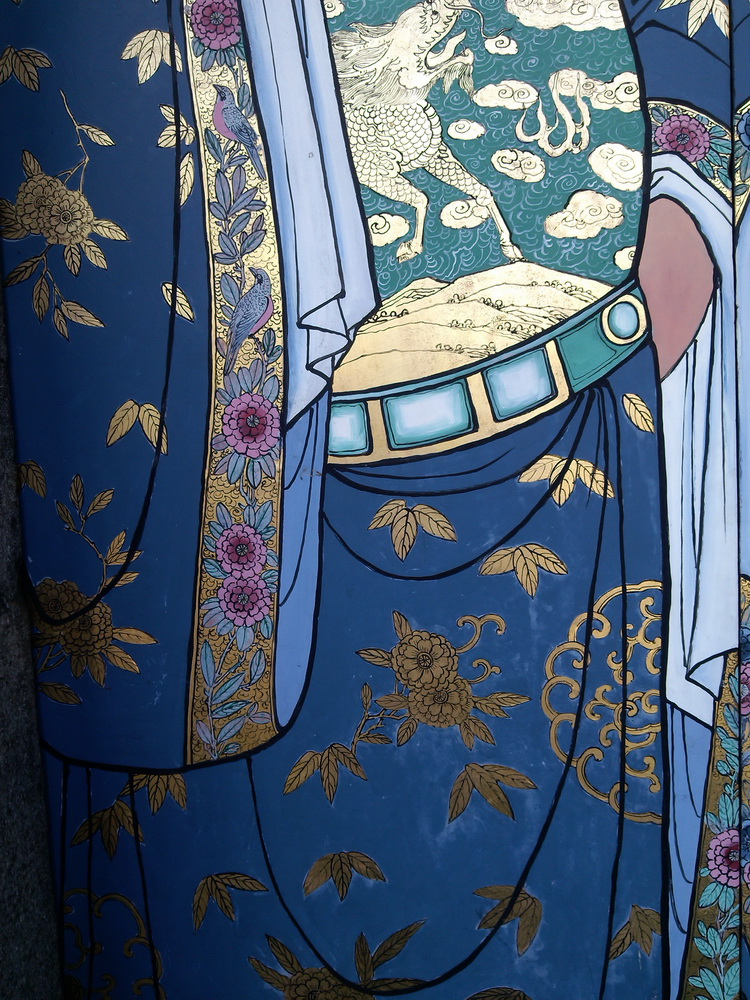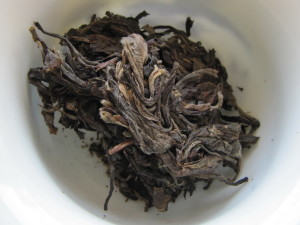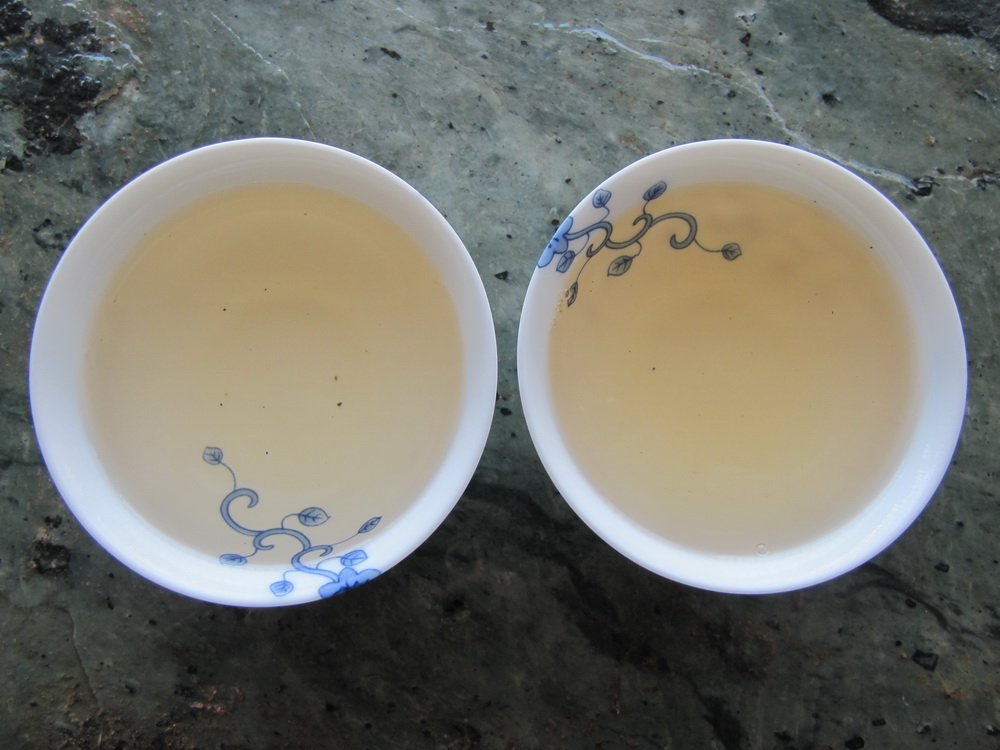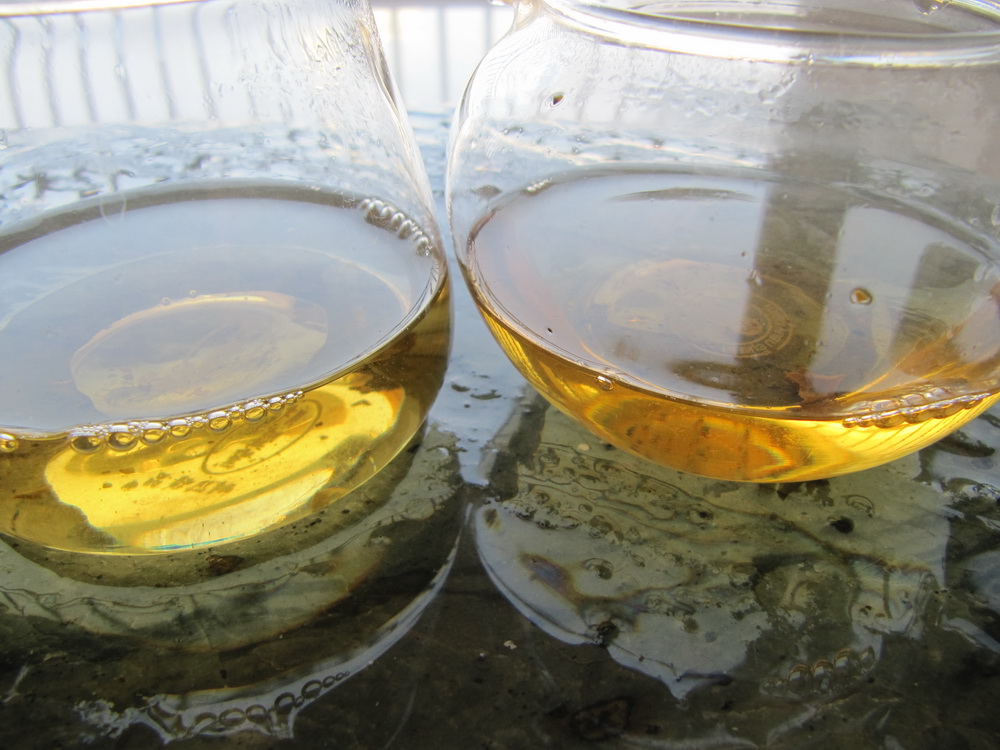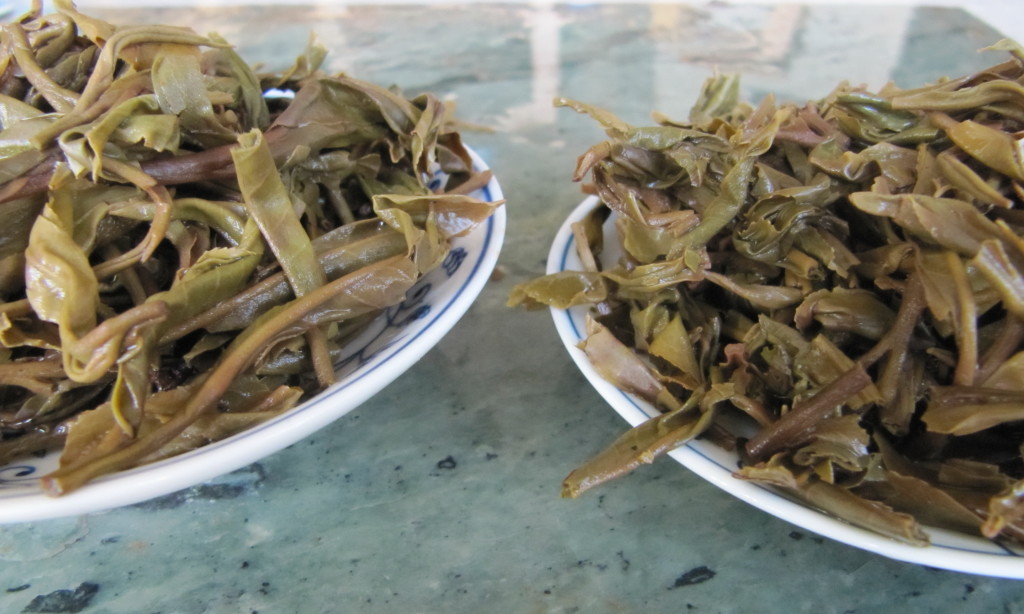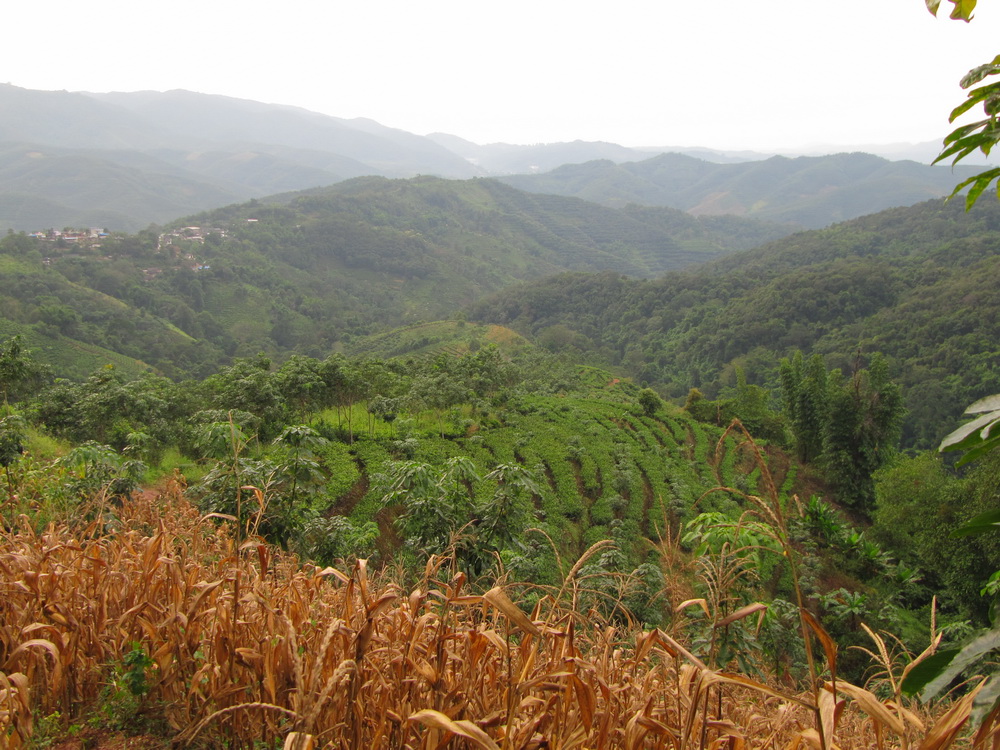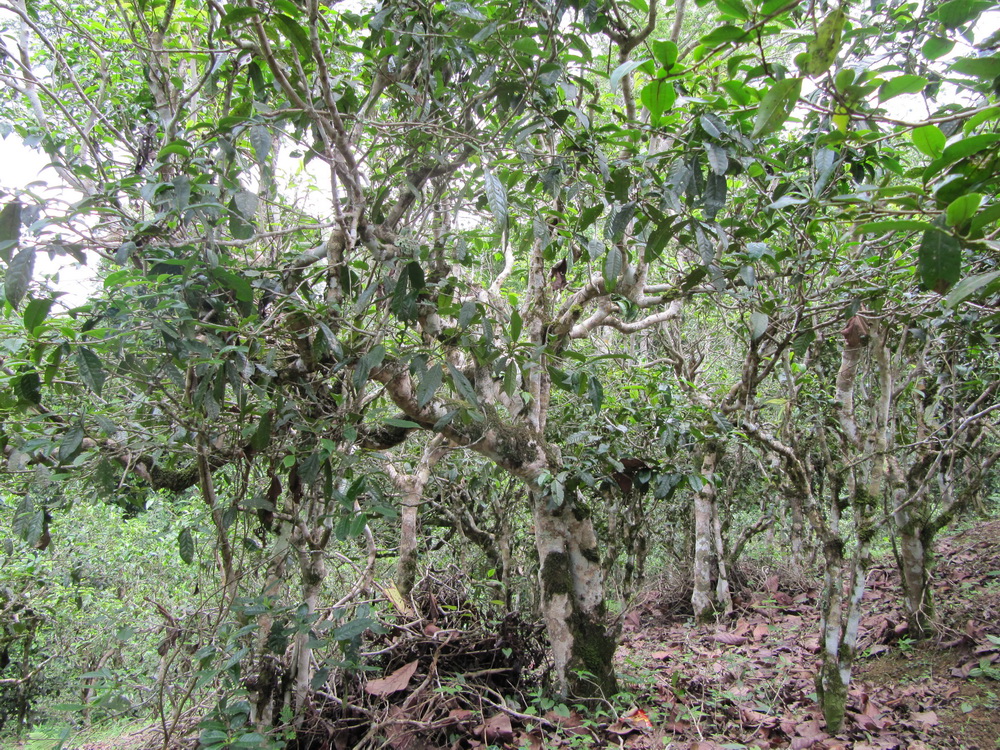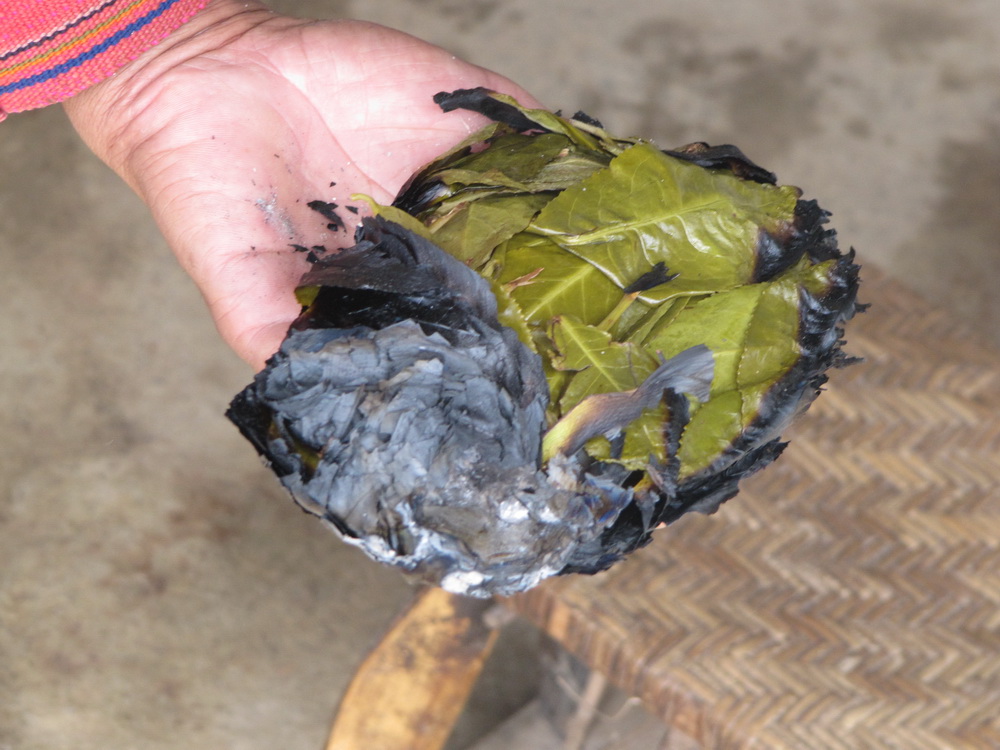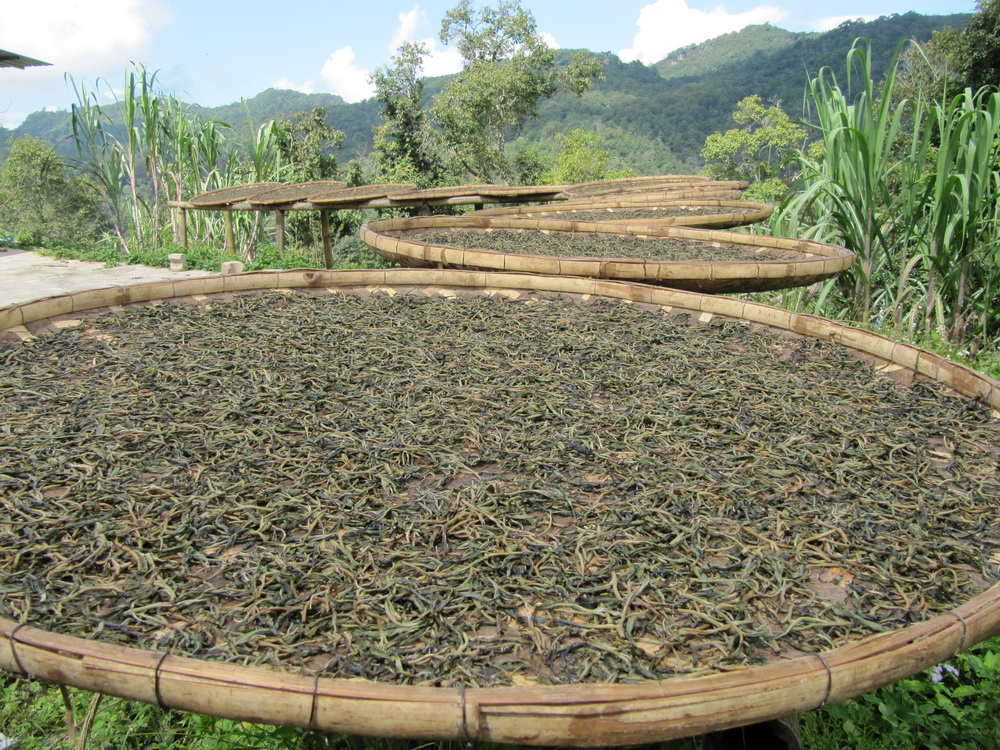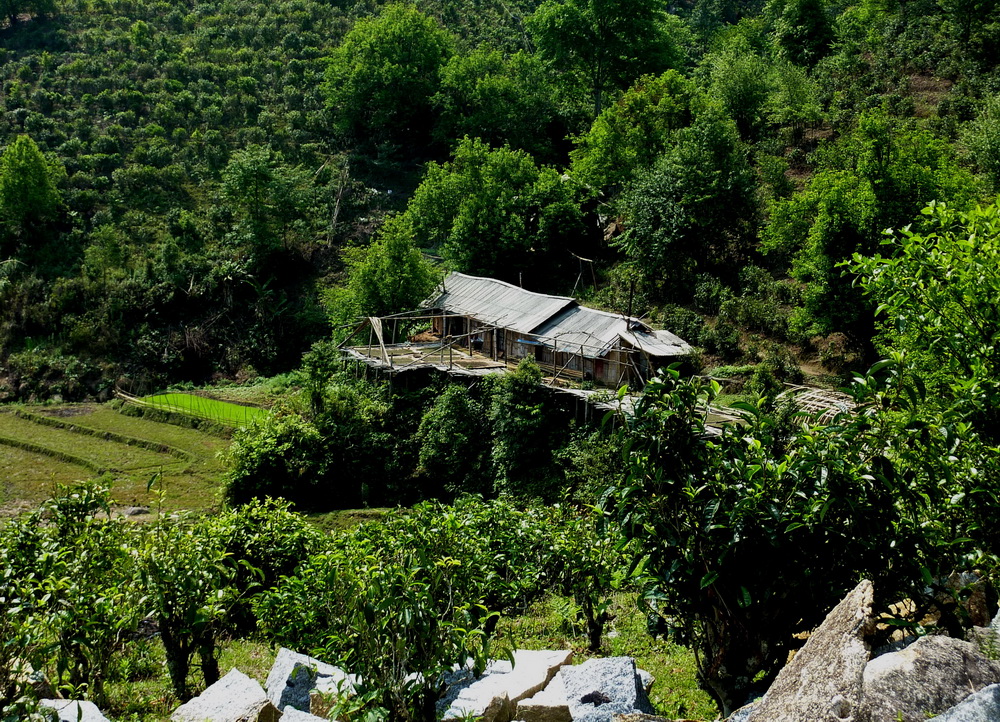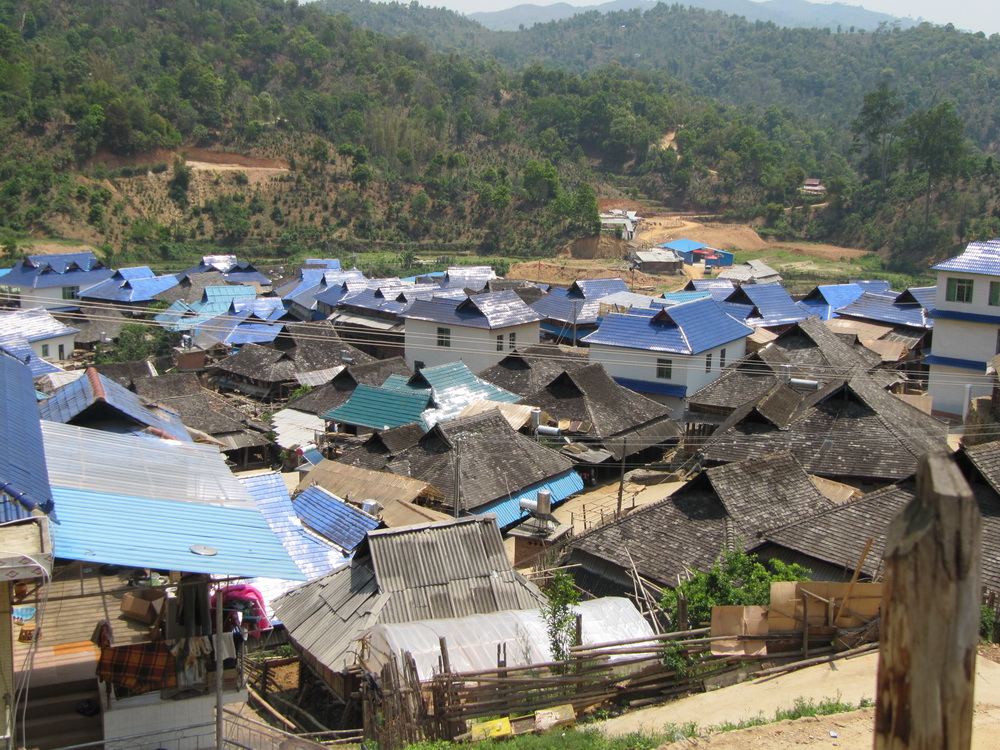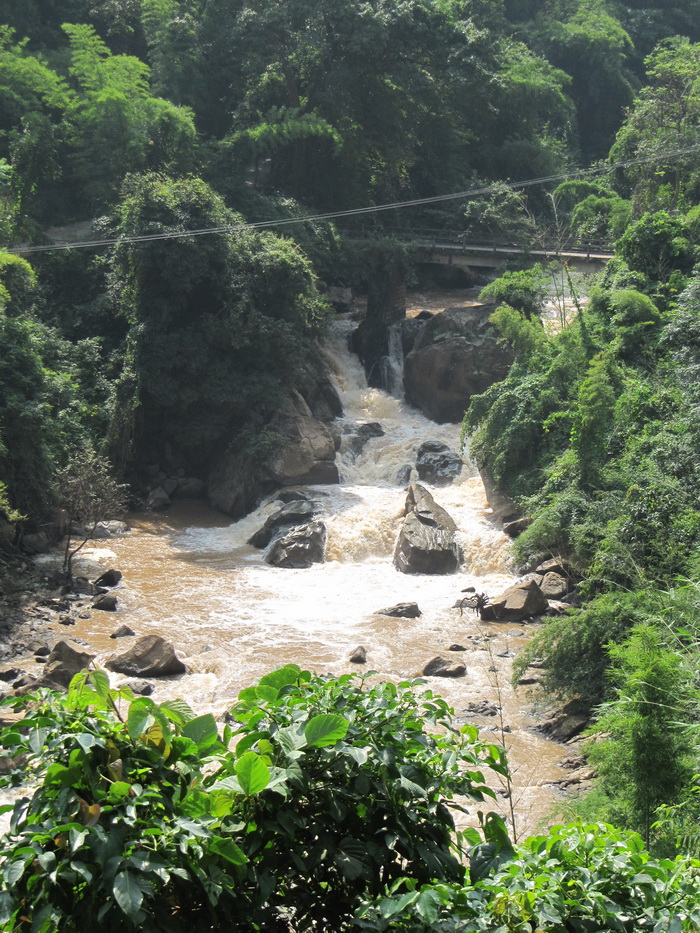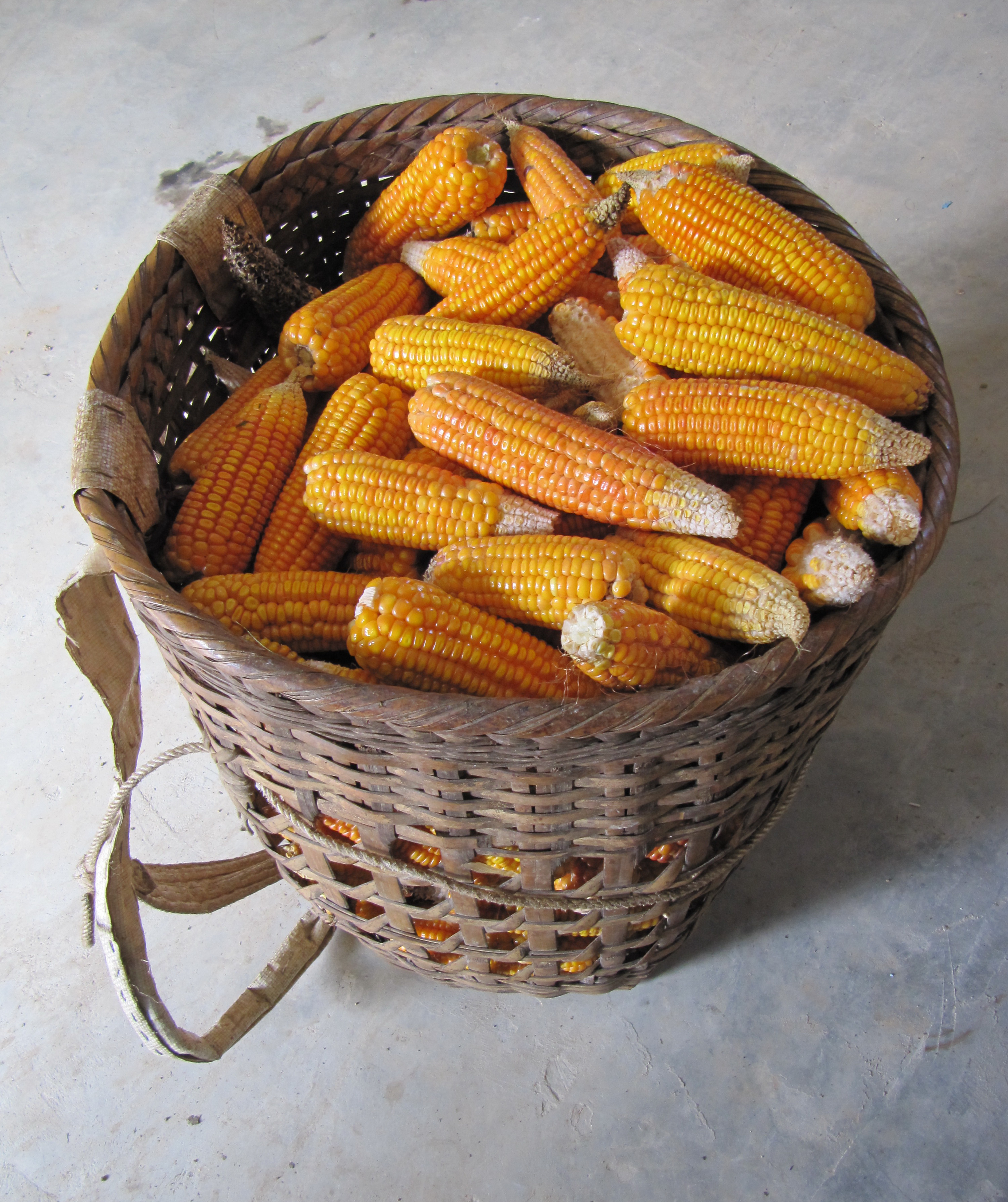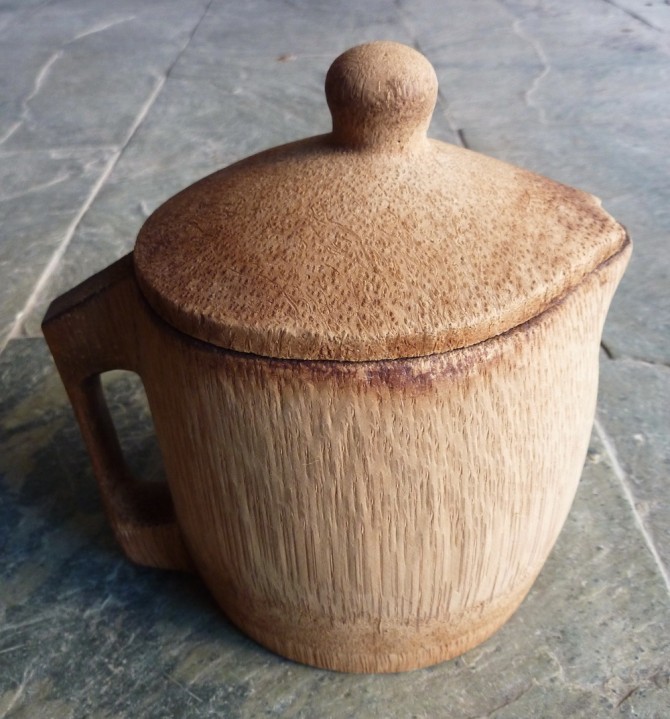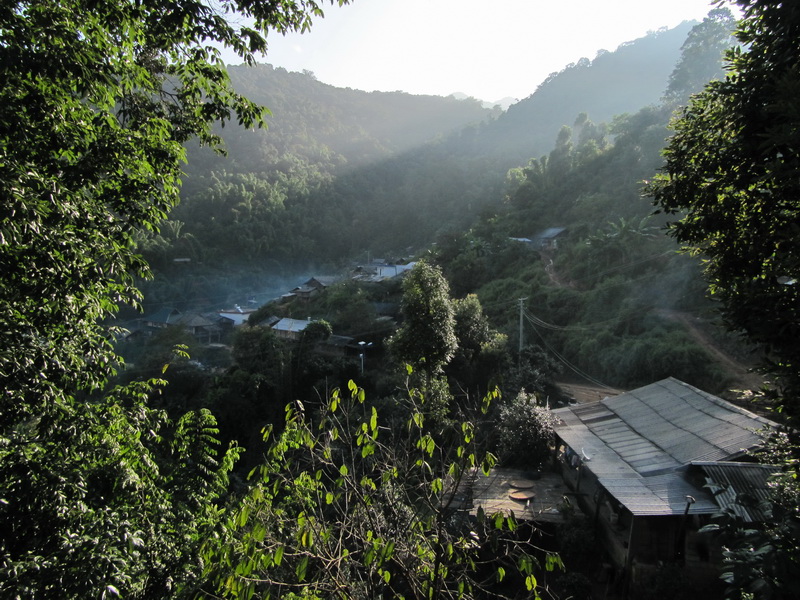We’d been talking about this for months – going to pick some wild tea trees in the forest on Long Pa Liang Zi. Of course, they’re not truly wild trees in the proper botanical sense, but they’re trees that the village has no collective memory of anyone planting and they are left largely untouched in the forest except for when they flush twice a year.
There apparently used to be a lot more, but they have over time, died or been cut down. The taller trees are a fairly impressive 7 or 8 metres in height but my tea farmer friend’s younger brother scaled them in seconds to pick the tea.
To see him move through the forest – at a speed I could barely maintain – was to be reminded of the Jinuo people’s still recent past as hunter gatherers. The animals are, unfortunately largely all gone, but the brother is the kind of guy who is happy to set off for a few days in the forest – as long as he has a couple of packs of cigarettes and his machete. He also has a mobile phone but with the sound turned off, so wearing his camouflage outfit so that he melts easily into the forest.
The trees are a mix of da ye zhong and xiao ye zhong. The girth at the base of some is significant, but having been cut back, they have subsequently produced a number of relatively slender trunks. The taller trees, of course, in this kind of environment will have grown very quickly, and don’t necessarily represent vast ages, though the villagers believe them to be several generations old.
I was trying to measure the height of one using the altimeter on my mobile phone – which wasn’t very successful and, reminded of the ‘barometer story’ about the young Niels Bohr as a student under Michael Rutherford, was thinking it would be better to give the phone to the brother in the top of the tree and get him to drop it so we could measure how long it took to hit the ground. (If you’re not familiar with that story, you can read it here ).
One problem with trees in this situation is that, since they are on ‘common’ land, anyone can pick them – the sort of situation that led to fighting between Yi and Yao people near Yi Shan Mo a couple of years ago. Here, there are only Jinuo people so there is not that kind of issue, but the tree in the picture below was cut down last year. No one is saying who and, contrary to Wilde’s assertion, in villages like Ya Nuo, it is probably indiscrete to ask.
We kept moving through the forest from one small group of trees to the next, so there was no way to spread the leaves out to keep them cool and time was an issue.
Having finished picking, my friends brother took the basket and, moving quite a bit faster than the two of us, carried the leaves back to the workshop to spread them out.
When we got back, perhaps 20 or so minutes later we fired the wok and fried the tea.
We ended up with just under a kilo of mao cha which has a very distinct and pleasing fragrance. More on that another day.

